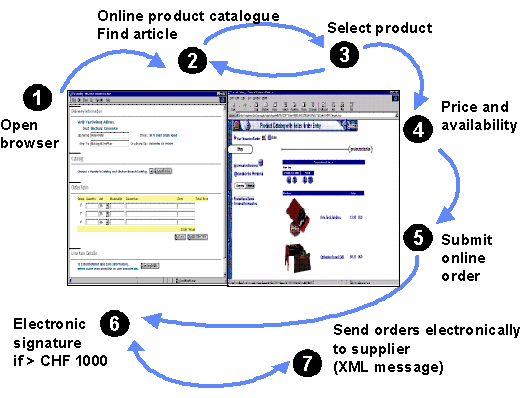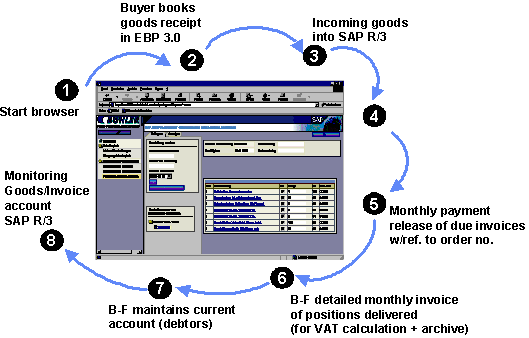Point-to-point E-Procurement solution at Bühler AG
Bühler AG is a globally active technology company in the food-processing, chemical engineering and die-casting industries. Since November 2000, the company has used a one-to-one E-Procurement solution to process all office supplies purchased in Switzerland from its supplier Büro-Fürrer. This pilot project marked the company’s successful entry into E-Business at the end of 2000. According to SAP Switzerland, it was the first time in Switzerland that a fully-integrated and fully-automated point-to-point solution had been realised between two business partners with different back-end systems. The following case study represents the buyer’s view.
Table of Contents
1. The companyPoint-to-point solution
2. E-Business vision and E-Business strategy
E-Procurement strategy, Implementation stages
3. Procurement solution
Process reengineering, Order process, Payment process
4. Implementation
Process design, System architecture
5. Operation
Costs, Process costs, Profitability
6. Success factors
1. The company
Background and industry
The iron foundry founded in 1860 by Adolf Bühler has developed into a technology group with a global profile. It generates a sales volume of more than CHF 1.4 billion every year and employs some 6,500 people. Bühler is an open-minded group in which its mostly long-serving employees traditionally enjoy a great deal of individual responsibility.
On the one hand, the Bühler Group is active in the food and fodder segment, specialising in grain processing. The mainstay of its activities is milling, an area augmented by cargo and silage handling for unloading and loading facilities as well as complete harbour terminals for goods handling. In addition, Bühler is active in the field of chemical engineering (colour chemistry and thermal processes for plastics) as well as in supplying and installing die-casting machines and peripheral devices for die-cast parts. The company sees itself as a technology partner for process engineering, engineering solutions, the supply and installation of complete plants, individual machines and automation systems including attendant services (see Fig. 1.1) and is a world market leader in many areas. Bühler’s customers are primarily manufacturing companies.
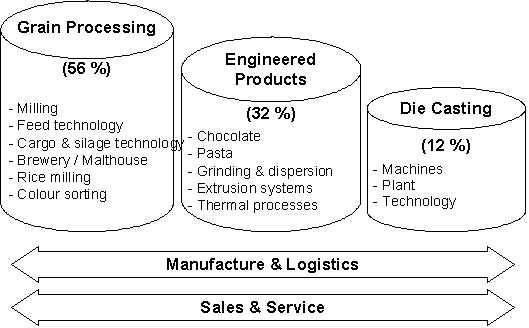
Fig. 1.1: Core business activities of the Bühler Group (in % of sales volume)
The purchasing organisation
Strategic purchasing at Bühler AG is centralised in Uzwil. The Purchasing Department functions as a service provider in larger projects and also looks after strategic suppliers. In addition, Central Purchasing has responsibility for the SAP procurement system. Operative purchasing for manufacturing and installation is made locally. The strategic software systems, in particular SAP, are increasingly being used throughout the group. Structures are not yet standardised at the various locations, however. Up to three specialists in Purchasing (buying, user helpdesk, system administration) and two in IT are responsible for managing E-Procurement at Bühler. The solution with Büro-Fürrer described here is limited exclusively to Bühler’s operations in Switzerland. Bühler employs approx. 75 employees responsible for buying office supplies, who make some 3,000 orders every year. Physical deliveries from Büro-Fürrer are made daily by a distributor to up to 12 different delivery locations. The solution plays a pioneering role since, for the first time, this point-to-point solution sees two Swiss companies with different back-end systems joining in electronic B2B cooperation.
2. E-Business vision and E-Business strategy
E-Business in the corporate strategy
The group management initiates and actively promotes all E-Business activities. This explains the high priority the company assigns to introducing E-Business into the company. A general E-Business strategy is currently being formulated by Bühler and is not yet available for publication. The most important reasons for according such a pivotal role to E-Business activities in the company are:
- to increase customer benefit,
- to ensure availability of goods and reduce lead times,
- to reduce transaction and processing costs and
- to ensure market competitiveness
The technical basis of all E-Business activities is their conformity to and feasibility with SAP’s basic strategic software. Besides the technical solution, this entails in particular helping the employees adapt to changing tasks. All relevant information and projects are currently being gathered, analysed and evaluated. Analysis is performed by prioritising in the cross-functional team subject to criteria stipulated by the group management. Possible projects are evaluated based on investigations into customer benefit and feasibility studies. It is hoped that this will facilitate the quick selection of promising projects for realisation in order to participate in current developments in this environment or even take on a pioneering role in the industry.
E-Procurement approaches in the company
E-Procurement strategy
Purchasing already has a comprehensive E-Procurement strategy. By the end of 2004, 30% of all orders originating from head office in Uzwil will be processed electronically, including associated transactions such as order confirmation and billing. This corresponds to an E-Business volume of approx. 22,500 orders annually. The overriding targets of E-Procurement at Bühler are harmonisation of procurement strategy with IT strategy and coordination of materials-group management. Another aim is to optimise the number of suppliers and the type of cooperation with preferred suppliers. Standardised products and processes should lead to a reduction in costs and process lead times – both internally and at suppliers. Bühler pursues an ongoing expansion of E-Procurement activities from indirect to include direct goods. The following approaches form the basis for both classes of goods:
- Product catalogues: electronic product catalogues replace printed catalogues. Orders from electronic product catalogues combine electronic order handling and settlement.
- Ordering and settlement: paperless data interchange and integration of supplier and customer systems.
- Auctions: with online auctions, the inquiry-offer process becomes more transparent and shortens the actual negotiating phase. Price reductions can be achieved for suitable goods.
- Web-based engineering: supporting communication with suppliers. The development process requires support from the first specification draft, to the joint development of subsystems right up to the prepared contract.
Implementation stages
Other suppliers should be connected with catalogues for indirect materials. To achieve this, further product and user groups will be integrated. Electronic data interchange with suppliers of direct materials will be set up for selected articles and product groups. Good data quality and clear article specifications are considered especially important in this context. All E-Procurement activities in purchasing are also considered with regard to optimising SRM (supplier relationship management).
The following areas of use have already been taken up specifically in Purchasing:
- Procurement information system in the intranet
- Online call for bids
- Online auction
- Electronic catalogue and electronic data interchange with Büro-Fürrer
Since 2000, Bühler has operated a sell-side solution for parts sales using an online shop set up for the purpose and the buy-side solution (with Büro-Fürrer) described in this article. Initial experience from online auctions has already been acquired, both as an organiser and as a participant. Further activities are planned as part of the E-Procurement strategy.
The vision for E-Procurement is:
Partners
Procurement partner
Büro-Fürrer is the leading supplier of office supplies in Swiss B2B and has operated E-Commerce solutions since 1993 [cf. Schubert 2001]. These solutions are characterised by a large range of functions and a marked capacity for individualisation. The online shop has operated since 1999. Fifty per cent of sales are already generated via online solutions. Strategic partnerships exist in fulfilment. In terms of business relationships, the focus is on one-to-one relationships with medium-sized and large customers. The supply range covers 10,000 articles. Payment is primarily made electronically to Payserv or, in the case of special customers like Bühler, via direct interfaces. Internet-based technologies are increasingly being used to process transactions with customers. This initial SAP EBP project served Büro-Fürrer as the basis for a current total of six further SAP EBP customer connections.
ERP supplier/Existing IT partners
SAP supplies Bühler AG with both ERP and procurement tools. Technical consulting services from SAP AG and Itelligence AG, Switzerland, were drawn on to implement the project. The choice of partners was based on earlier business relationships. The introductory phase was supported by SAP, whose systems Bühler has deployed for over 20 years. The second phase, the later release change, was largely supported by Itelligence. Itelligence is a consulting firm specialising in advising SMEs on SAP systems. All participants used the project’s pilot character as a way of developing their own know-how.
3. Procurement solution
The following section describes the old and new processes in the procurement solution and each participants’ roles and functions.
Original process [process reengineering]
The order process originally employed at Bühler involved manually completed forms that were sent to Büro-Fürrer by fax. The basis for orders was the Büro-Fürrer catalogue. The commonest products were also grouped together on an extra DIN A4 sheet to shorten the search process. Each of the 80 or so cost centres authorised to order office supplies at Bühler were managed at Büro-Fürrer under their own customer number. They received a separate monthly invoice that had to be manually checked, allocated and entered into the SAP system as a “sundry invoice without reference to a purchase order”. No part of the order process could be monitored or examined afterwards. Because of the many gaps between processes, mistakes were inevitable.
New procurement process
End-to-end processes were established using the new EBP system. Settlement of office supplies is characterised by a special Bühler feature: since the switch to the new system, the entire goods and information cycle is divided into two independent process chains: the order process and the payment process. Both processes must be initiated separately by the user. By confirming the stock receipt, the payment process is automatically started, actual payment is made once monthly.
In the order process (Fig. 3.1) for office supplies, the buyer uses the catalogue on the suppliers’ platform. This is called a “round trip”. It is accessed by an OCI interface (cf. Fig. 4.1). The buyer is presented with a wide range of search options in the product catalogue customised for Bühler – showing the Bühler range and Bühler prices. The user can also select from the entire range if required. The SAP EBP is used to create the shopping basket and for authorisation and allocation. The order is opened internally in the R/3 back-end system and sent via the Business Connector to the suppliers as an XML file (cf. Fig. 4.1), provided it does not exceed CHF 1,000. As a matter of principle, budget accountability lies with the individual cost centres; in effect, purchasing circumvents the Purchasing Department. If a single order exceeds a volume of CHF 1,000, however, the authorisation work flow is initiated and the Central Purchasing administrator must approve or reject the order (cf. Fig. 3.1, Point 6). The order process is started only after approval. This additional barrier serves mainly to check plausibility and enable queries. This reduces errors. The average size of an order is around CHF 130. The work flow replaces paper-based approval processes or disposes of them altogether. The buyer orders independently, enhancing responsibility.
The payment process (Fig. 3.2), on the other hand, is only triggered once the ordered goods have been delivered, checked by the customer and confirmed in the system. This is an additional and important task assumed by the consumer (buyer). If the ordered goods match the stock receipts, they are booked by the buyer in the SAP EPB.
All further process steps are effected automatically: The stock receipt is entered into the SAP R/3 where it is booked automatically on confirmation. The process ends with the monthly release for payment of all due invoices. The invoice document type, ending in RE-L, differs from a conventional order in that it is triggered by the logistical auditing based on the stock receipt. Büro-Fürrer sends Bühler a detailed printed monthly invoice that serves to calculate VAT and for archiving. The monthly invoice can also be transmitted directly to the SAP system via the OCI interface as an XML file.
Stock and invoice receipts are monitored in the SAP R/3. Because of the subsequent manual initiation of the payment process, a small variance may result between the time of actual stock receipt (Büro-Fürrer delivery date) and its entry in the books. The monthly invoices are debited automatically from Bühler’s account the month following their due date. Preliminary posting of invoices is no longer necessary. Auditing the accounts can be limited to random samples. Erroneous deliveries, if they occur at all, are returned unposted to the suppliers.
Altered allocation of tasks
The allocation of roles and tasks between Bühler and Büro-Fürrer has not changed. Changes did occur within each company, however. It was possible to simplify processes at Bühler and Büro-Fürrer, chiefly as a result of discontinuing the dissemination of printed information by hand. Services for users and responsibility for software and equipment resulted in additional tasks for Bühler’s Purchasing Department. The resulting extra expenditure is balanced above all by much simpler financial accounting. Users place orders themselves. Since the system switchover, employees have taken on a broad spectrum of tasks and thus greater responsibility. This has been broadly welcomed by employees.
4. Implementation
Redesign of processes [process design]
As part of the concept phase, selected employees were included in the process analysis by means of a questionnaire. Users experienced relatively few changes in their overall fields of activity. Employees were prepared for the new process in a one-off training session. There were practically no acceptance difficulties. Permanently available user support at Bühler is deemed significant. Support is provided by the company’s E-Procurement specialists. Vanishing administrative activities connected with order processing resulted in significant changes.
Software solution / Programming [system architecture]
The E-Procurement solution was piloted in May 2000 as a subproject of the “Horizons” master project and served as the trigger to put E-Business into practice. The primary target of the “Horizons” project is to achieve general procedural improvements within the company. Another reason behind the initiatives is to participate in current developments in E-Business (and thus ensure the company’s capacity to innovate). A low-risk entry into the world of E-Business was planned, with an implemented supplier link, for the end of 2000. Following intensive process analyses and selection of projects, the solution with Büro-Fürrer was in place by November 2000. Bühler developed the most important solution concepts in-house. Consulting support provided by SAP and Itelligence was concentrated on the solution’s technical implementation.
Technical platform and architecture
At Bühler:
Bühler uses SAP R/3 Release 4.6B to depict its business processes in IT terms. The software itself is industry-neutral and covers virtually all business areas (Accounting, Human Resources, Distribution, Materials Management etc.). Equipment architectures are supported by a wide range of manufacturers. The operating systems are UNIX and Windows. The SAP system enables automatic processing of tasks in Purchasing without any significant intervention by the user. Procurement, Inventory Management, Auditing and specialist departments access common data, reducing outlay for data collection and input errors.
Bühler uses the latest versions of SAP’s standard software packages as the technical platform for E-Procurement. The previously used BBP Version 2.0 has already been replaced by EBP 3.0 (see Fig. 4.1). This switchover had no impact for users but does allow simplified data interchange and facilitates other system connections (e.g. several different clients). Connections to other indirect stock suppliers will be made via Conextrade in the near future. At the same time, electronic documents will be introduced for direct materials. Connections to more suppliers should all be made using the same tool. The aim is to provide all users with standard user interfaces.
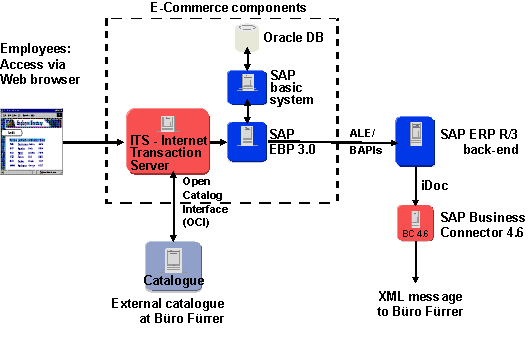
Fig. 4.1: E-Procurement with Büro-Fürrer: Technical solutions
In the main, the E-Procurement solution supports the order process, logistics management and billing and payment processes. Improved controlling opportunities, thanks to easier database input, resulted as an additional function.
At Büro-Fürrer:
Since 1999, Büro-Fürrer has used Intentia Switzerland AG’s Movex ERP system as its back-end. Its technical platform is the OS/400 operating system, both for the ERP system and its internet solutions. Data is stored in DB2/400 databases. The e-shop is a customised software package developed specially for Büro-Fürrer. It is based on IBM’s net.commerce and runs on an AS/400 platform. The e-shop is based on an open script language for DB2 (Net.Data). The scripts developed for the e-shop work on all operating systems. Interfaces between Movex and the e-shop enable regular data interchange via an interposed database. Order transfers, product range updates, stock quantities (article availability), customer mutations etc. are performed completely automatically using a batch process. Settlement is not included in the internet solutions. It is generated by the Movex ERP system and, in Bühler’s case, is sent electronically as a collective invoice. Special ABAPs are used to import to Bühler’s SAP system.
5. Operation
Maintenance
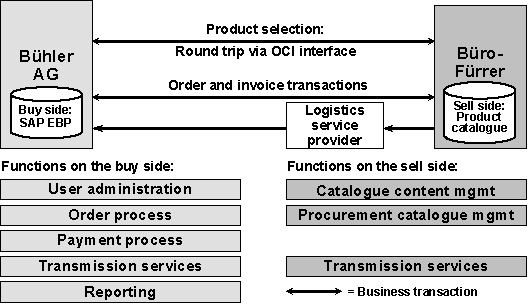
Fig. 5.1: Allocation of tasks between Bühler and Büro-Fürrer
In contrast to conventional sell-side solutions, user administration does not take place at the supplier’s. Bühler administers its users itself in its own SAP system. At the same time, the drawback of conventional buy-side solutions with a product catalogue deposited at the customer’s is avoided. The catalogue is integrated into the Büro-Fürrer e-shop where it is kept constantly updated. The solution was made possible by SAP’s EBP system. The allocation of tasks (see Fig. 5.1) is clearly regulated: Bühler maintains its own system and Büro-Fürrer ensures upkeep of the catalogue. Büro-Fürrer hosts and administers the online shop as the basis for the product catalogue.
Benefits
A transparent and system-conformant end-to-end process was achieved, from procurement to auditing, that in contrast to the original process can be readily comprehended. Errors and abuse are excluded as far as possible. A reduction in lead times of an estimated 30% was achieved by the integrated internet-based order processing. An exact quantitative measure of utility and an evaluation of feasibility is difficult because of allocability and is currently unavailable. The experience and basic know-how developed as part of the project are highly significant. They serve as the basis for all further E-Procurement solutions. Counted among them is, for example, access to an external electronic product catalogue that is kept constantly updated by the supplier. Bühler rates improvements in operating processes as excellent and in inter-company processes as good. An internal bundling effect is achieved through the choice of supplier imposed by the system, a process that cannot be circumvented by individual buyers. This bundling effect is also noticeable through the higher order quantities placed with what is now the sole supplier. The number of products available can be reduced to a range exclusive to Bühler.
Costs / Benefits
The costs for equipment and software, external consultants and internal spending by IT and Procurement were budgeted at CHF 190,000. Bühler AG has signed up to the mySAP.com suite but this does not entail any separate licence costs for the new system.
Savings in process costs, estimated by Bühler at over 50%, were realised by automatically opening the customer order at Büro-Fürrer and the automatic invoice recording in logistical auditing based on stock receipts (75 buyers and approx. 250 orders per month). Potential for price reductions are also achieved by requirements bundling.
Profitability
Taken on its own, the pilot project was considered profitable. Further-reaching efficiency effects are expected, in particular by connecting more suppliers. The payback time for this solution is set at around a year. The greatest synergistic effects were realised in financial accounting. An extended feasibility survey was chosen to assess the feasibility of the entire project. Besides immediate effects in costs and benefits, the survey incorporates the industry-wide composite impact and long-term effects on innovative ability and competitiveness of the entire undertaking [cf. Reichwald et al. 1996 for an example].
6. Success factors
The link-up of two partners with different back-ends and accounting systems functioned smoothly. The reorganisation of processes, high data quality, exact specifications and clear arrangements with the supplier were highly significant in the implementation of the E-Procurement solution.
For day-to-day use, the underlying product catalogue had to meet high quality standards, possess high availability, good article search functions and clear menu structures with standard processes. In other words, user-friendliness had to be outstanding.
The solution’s specialities
The solution described here represents the first implementation in Switzerland of a point-to-point solution in which the business partners work with different back-end systems. It is not an exclusively sell-side solution. The advantages of a sell-side solution were exploited by using a product catalogue incorporated and managed by the seller. At the same time, the benefits of a conventional buy-side solution were exploited in the user administration integrated at the buyer’s (cf. Chapter 1).
The solution has a pioneering character in the area of E-Procurement both at Bühler and at Büro-Fürrer. It serves as the basis for all further activities directed to E-Business. The implemented SAP EBP solution is fully integrated and automated and is highly efficient for both partners.
All requirements stated at the start and all necessary interfaces were implemented. A basic prerequisite in drawing up and choosing the system solution was its portability to later areas of use in the company – in other words, to other locations (using SAP) with the option of expansion to other contracting partners and suppliers. According to Bühler, this requirement was fulfilled.
Changes
In general a shift from routine tasks to make-ready activities transpired. Buyers order themselves, Purchasing has only preparatory tasks and responsibility for error handling. In the preparatory phase, E-Procurement solutions involve more work for Purchasing in creating the right conditions for them.
Difficulties
By and large, there were no particular difficulties. Because of the pilot nature of the new systems and solutions, project planning turned out to be difficult. The supplier has a relatively complex IT organisation involving several different companies, which meant that a great many participants had to be coordinated during the project-completion phase. At this time, too, there were no comparable reference users available with whom to exchange experiences. In addition, the project had to be realised outside a development environment, in other words, only a single system architecture was available.
Benefits
The system generally improved transparency. It was possible to bundle requirements and realise a scalable solution. System administration, in particular monitoring, is now simpler. System stability is sufficient for the type of products for purchase. System outages that do occur can often be traced back to the internet connection. Greater dependence on one single supplier has not arisen since the technical conditions for connecting other/new suppliers are already in place. On the contrary, it is now far easier to change supplier within the company. Opportunities for strategic partnerships have greatly improved. Since the system switchover resulting in buyers ordering themselves, employees have also acquired a broader scope of tasks and thus have more responsibility. All in all, the new system has contributed to increased employee motivation.
Lessons Learned
For Bühler, the most important insights gained at the launch of the pilot project were:
- The selection and evaluation of suitable E-Business projects are of fundamental importance. Ideally, clearly structured projects can be completed within six months, a period which should be sufficient to cover costs. Larger projects should be broken down into smaller, six-month subprojects accordingly.
- The development of in-company expertise is especially important for small and medium-sized companies. Here, time requirements should not be underestimated. Above all, a lack of technological expertise can hinder a project’s successful realisation. Realistically, three to four months should be set aside, split into approx. 40% for IT, 30% for Purchasing, 20% for consulting and, depending on the situation, 10% for the supplier.
- Once the system is running, ongoing user support assumes a decisive role. The main support functions are user administration with the necessary data care such as opening, blocking and role allocation. This also includes order control (reporting), for example for a missing delivery confirmation. Ongoing support is part of user support and should not be neglected.
Conclusion
The technological objectives, including electronic data transmission via the Business Connector, were accomplished. At the time of writing, the solution operates satisfactorily but must be extended to incorporate connections to further suppliers, additional (internal) buyers and new locations. The company’s own expertise and excellent relationship with its supplier of many years contributed a great deal to the project’s success. The first step was the most difficult. All other connections were far easier to realise with the expertise acquired thus far.

